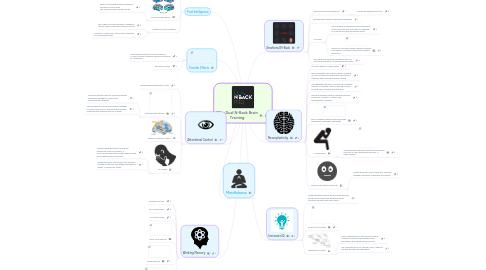
1. Working Memory
1.1. Episodic Memory
1.2. For Young People
1.3. For Older People
1.4. Short Term Memory
1.5. Verbal Memory
1.6. Visuo-Spatial Memory
2. Attentional Control
2.1. Biohacking the prefrontal cortex
2.2. Frontoparietal network
2.2.1. Intensive Working Memory Training Produces Functional Changes in Large-scale Frontoparietal Networks.
2.2.2. Task complexity and location specific changes of cortical thickness in executive and salience networks after working memory training
2.3. External Attention System
2.4. Vs Anxiety
2.4.1. Training working memory to improve attentional control in anxiety: A proof-of-principle study using behavioral and electrophysiological measures
2.4.2. Working Memory Training and CBT Reduces Anxiety Symptoms and Attentional Biases to Threat: A Preliminary Study
3. Mindfulness
4. Transfer Effects
4.1. Does Working Memory Training Transfer? A Meta-Analysis Including Training Conditions as Moderators
4.2. Executive Control
5. Fluid Intelligence
5.1. Meta-Analyses on Working Memory Training for IQ and Working Memory
5.2. Default mode network
5.2.1. Effects of working memory training on functional connectivity and cerebral blood flow during rest
5.3. Cognitive Control Network
5.3.1. The cognitive control network: Integrated cortical regions with dissociable functions
5.3.2. A theory of cognitive control, aging cognition, and neuromodulation.
6. Emotional N-Back
6.1. Reducing emotional reactivity
6.1.1. Control of negative emotions
6.2. Recalibrates automatic emotional responses
6.3. Vs Stress
6.3.1. The influence of cognitive control training on stress reactivity and rumination in response to a lab stressor and naturalistic stress
6.3.2. Effects of a process-based cognitive training intervention for patients with stress-related exhaustion
6.4. Early detection and late cognitive control of emotional distraction by the prefrontal cortex
7. Neuroplasticity
7.1. Increases density of gray matter
7.2. Task complexity and location specific changes of cortical thickness in executive and salience networks after working memory training
7.3. Strengthened Effective Connectivity Underlies Transfer of Working Memory Training to Tests of Short-Term Memory and Attention
7.4. Intensive Working Memory Training Produces Functional Changes in Large-scale Frontoparietal Networks
7.5. BDNF mediates adaptive brain and body responses to energetic challenges.
7.6. Vs Depression
7.6.1. Computerized cognitive training and functional recovery in major depressive disorder: A meta-analysis
7.7. Reducing Emotional Reactivity
7.7.1. Using executive control training to suppress amygdala reactivity to aversive information
8. Increases IQ
8.1. Making working memory work: A meta-analysis of executive control and working memory training in younger and older adults
8.2. 5.5 point IQ increase
8.3. Interference Control
8.3.1. Neural mechanisms of interference control underlie the relationship between fluid intelligence and working memory span.
8.3.2. The Mechanisms of Far Transfer From Cognitive Training: Review and Hypothesis.
